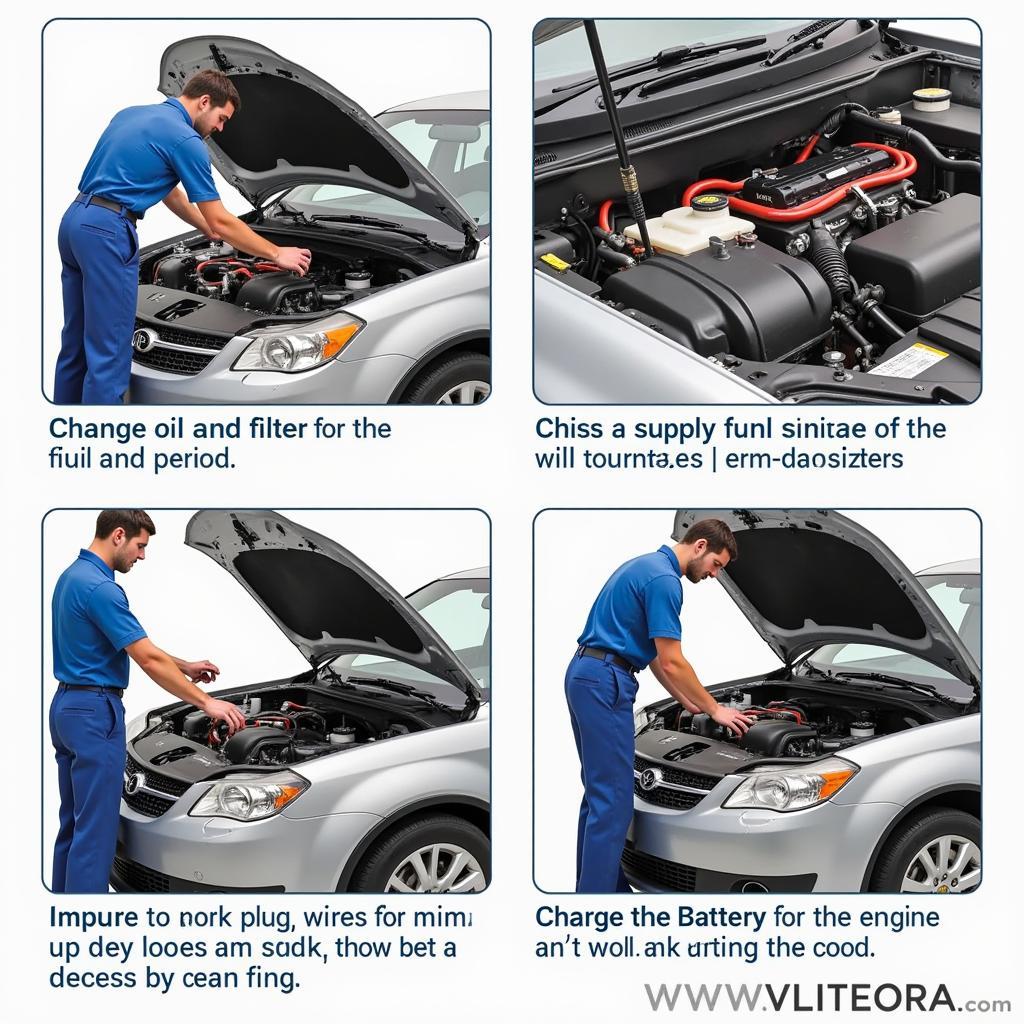Reviving a car that’s been sitting idle for years can feel like a daunting task, but with a systematic approach, it’s entirely achievable. Whether it’s a classic car you’re looking to restore or a daily driver left untouched for too long, this guide will walk you through the essential steps to get your vehicle back on the road.
Assessing the Damage: First Steps When Reviving a Dormant Vehicle
Before jumping into repairs, thoroughly assess the condition of your car. This initial inspection will help you prioritize tasks and estimate the effort required for the project. Years of sitting can lead to various issues, from dead batteries and flat tires to more serious problems like rusted components and engine damage.
- Check the fluids: Examine the engine oil, coolant, brake fluid, power steering fluid, and transmission fluid. Look for signs of contamination, low levels, or unusual consistency. Old, degraded fluids can cause significant damage, so flushing and replacing them is crucial.
- Inspect the tires: Flat spots are common on cars that have been sitting for a long time. Check the tire pressure and look for any cracks or dry rot. You might need new tires if the damage is extensive.
- Look for signs of pests: Rodents and insects often seek shelter in unused vehicles, causing damage to wiring, upholstery, and insulation. Look for droppings, nests, or chewed wires.
- Examine the body for rust: Rust can be a major problem, especially in areas with high humidity. Check the undercarriage, wheel wells, and any other areas prone to corrosion.
Breathing Life Back into the Engine: A Step-by-Step Guide
Getting the engine running again requires careful attention. Don’t just try to start it right away; that could cause further damage.
- Change the oil and filter: Old oil can be acidic and damage the engine. Always change the oil and filter before attempting to start the car.
- Check the fuel system: Old gasoline can gum up the fuel lines and carburetor or fuel injectors. You might need to drain the fuel tank and clean the fuel system components.
- Inspect the spark plugs and wires: These components are essential for ignition. Replace them if they show signs of wear or corrosion.
- Charge or replace the battery: A dead battery is a given after years of inactivity. Try charging it first; if it doesn’t hold a charge, replace it.
- Try turning the engine over by hand: Before using the starter, try turning the engine over by hand using a wrench on the crankshaft bolt. This can help free up any seized components.
“Taking these steps before attempting to start the engine can prevent costly repairs down the line,” advises John Davis, a seasoned automotive technician with over 20 years of experience.
 Engine maintenance on a car that’s been sitting
Engine maintenance on a car that’s been sitting
Addressing the Brakes, Suspension, and Electrical Systems
Once the engine is running, focus on other crucial systems.
- Inspect the brakes: Brake lines can corrode, and brake fluid can absorb moisture, leading to reduced braking performance. Bleed the brakes and replace any damaged components.
- Check the suspension: Bushings and other rubber components can deteriorate over time. Inspect them for cracks or dry rot.
- Examine the electrical system: Check all the lights, wipers, and other electrical components for proper operation. Replace any faulty parts.
Dealing with Rust and Bodywork Issues on a Long-Idle Car
Rust can be a significant challenge. Depending on the severity, you may need to repair or replace affected panels.
- Surface rust: Surface rust can often be removed with sandpaper or a wire brush.
- Deep rust: Deep rust may require more extensive repairs, including patching or replacing body panels.
“Rust is a car’s worst enemy, especially when it’s been sitting. Address it promptly to prevent further damage,” cautions Maria Sanchez, a classic car restoration expert.
Conclusion
Bringing a car back to life after years of sitting requires patience and effort. By following these steps, you’ll be well on your way to enjoying your revived vehicle. Remember, regular maintenance is key to preventing future problems. If you need assistance, don’t hesitate to connect with us at AutoTipPro. We’re here to help! Contact us at +1 (641) 206-8880 or visit our office at 500 N St Mary’s St, San Antonio, TX 78205, United States.
FAQ
- How much does it cost to fix a car that’s been sitting for years? The cost can vary greatly depending on the car’s condition and the extent of the required repairs.
- Is it worth fixing a car that’s been sitting for a long time? It depends on the sentimental value of the car and the cost of repairs versus its market value.
- What are the most common problems with cars that have been sitting? Dead battery, flat tires, rusty components, and a gummed-up fuel system are common issues.
- How long can a car sit before it’s undriveable? Even a few months of sitting can cause problems. The longer a car sits, the more likely it is to develop serious issues.
- Can I start a car that’s been sitting for years? While you can try, it’s best to follow the steps outlined in this guide to minimize the risk of further damage.
- What should I do if I can’t get the engine to start? Consult a qualified mechanic for diagnosis and repair.
- How can I prevent problems with a car that will be sitting for a while? Prepare the car for storage by adding fuel stabilizer, disconnecting the battery, and covering it to protect it from the elements.




Leave a Reply